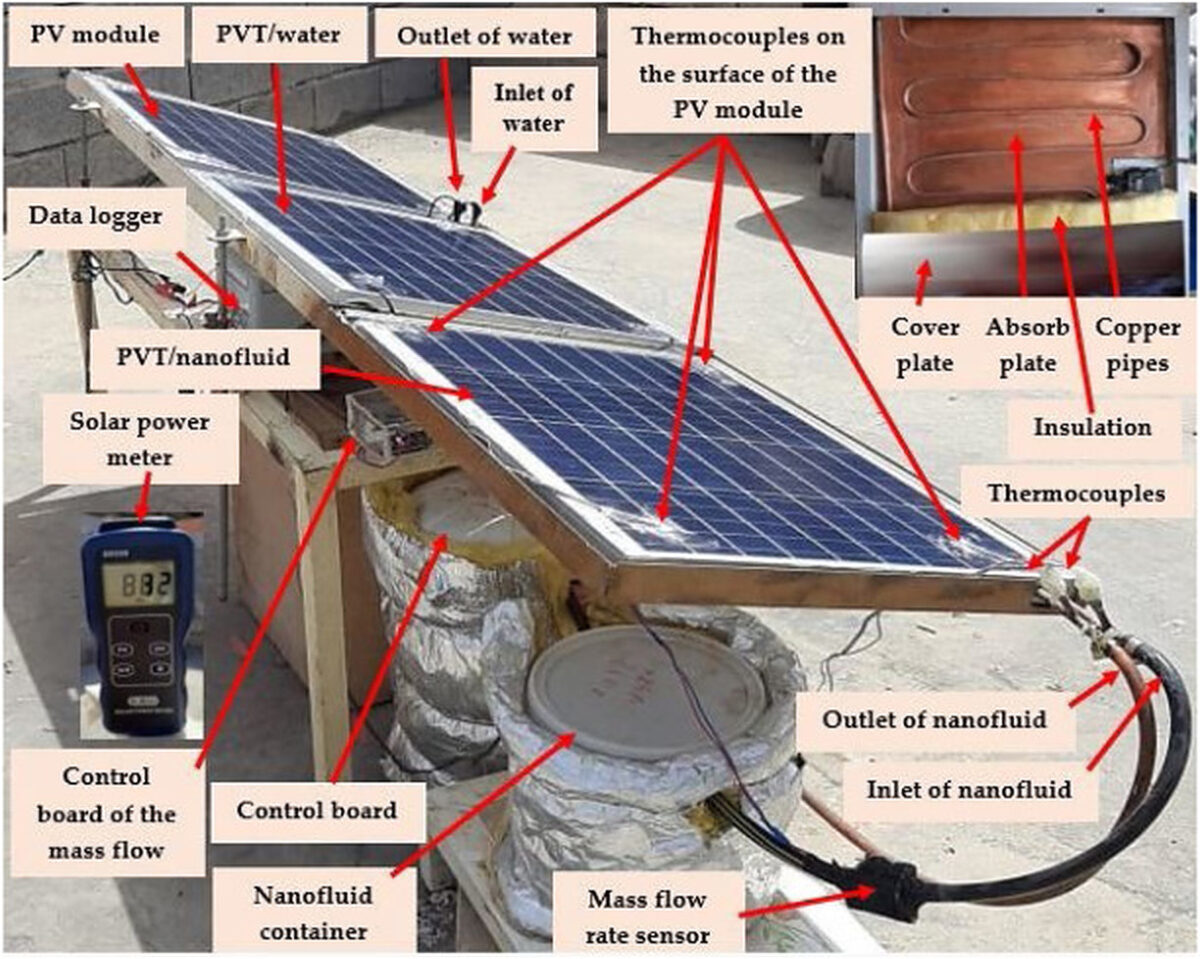Scientists from the University of Miskolc in Hungary and the Basrah University for Oil and Gas in Iraq have designed a photovoltaic-thermal (PVT) system prototype that utilizes a zirconium oxide (ZrO2) nanofluid as a cooling agent for the system's PV unit.
The aim of their work was to compare the performance of the system with that of non-cooled PV systems or systems cooled with water under hot climate conditions.
“Experiments were conducted in May 2022 on sunny days from 7:00 am to 5:00 pm, with no significant variation in the ambient temperature and solar radiation during the experiment days,” the researchers said. “The maximum ambient temperature was 42.7 C, specifically at 12:20 pm, then gradually lowered until sunset.”
The experimental setting was located in Basra city, in the south of Iraq. It consisted of a PVT module cooled by ZrO2, a PV module cooled with water, and a PV module without cooling, with all the modules having a nominal power of 50 W. The PVT module uses an absorber copper plate with flow channels attached to the backside, which reduces the module temperature.
Popular content
The group also applied a layer of thermal wool on the serpentine tubes to completely cover the PV module’s backside and reduce heat losses, then covered it with an aluminum plate. The ZrO2 nanofluid is circulated in the serpentine tubes by two pumps with a mass flow rate of 0.7 L/min set by flow sensors.
The scientists applied three different concentrations of ZrO2 of 0.015%, 0.025%, and 0.0275% in the PVT system, which they said led to temperature reductions of 14%, 18.1%, and 21.2%, respectively, compared to the reference PV panel without cooling. The operating temperature of the module cooled with water was reduced by 9.7%.
They presented the system in the study “Effect of zirconium oxide nanofluid on the behaviour of photovoltaic–thermal system: An experimental study,” published in Energy Reports. “The current study can be extended by improving the thermal properties of ZrO nanofluid through adding another type of nanomaterials to form a hybrid nanofluid, applied for a new cooling system design,” they stated.
This content is protected by copyright and may not be reused. If you want to cooperate with us and would like to reuse some of our content, please contact: editors@pv-magazine.com.



By submitting this form you agree to pv magazine using your data for the purposes of publishing your comment.
Your personal data will only be disclosed or otherwise transmitted to third parties for the purposes of spam filtering or if this is necessary for technical maintenance of the website. Any other transfer to third parties will not take place unless this is justified on the basis of applicable data protection regulations or if pv magazine is legally obliged to do so.
You may revoke this consent at any time with effect for the future, in which case your personal data will be deleted immediately. Otherwise, your data will be deleted if pv magazine has processed your request or the purpose of data storage is fulfilled.
Further information on data privacy can be found in our Data Protection Policy.